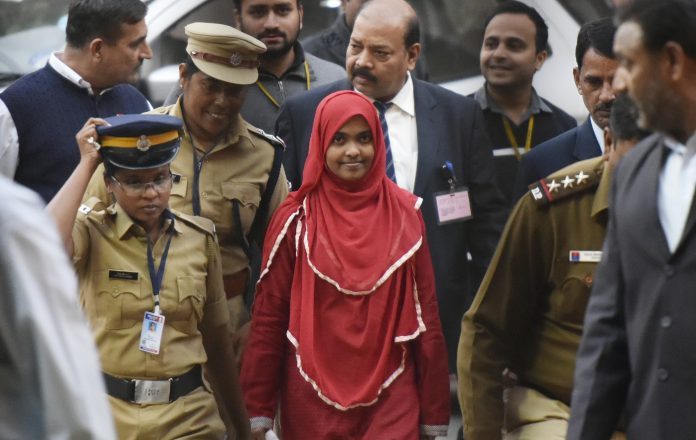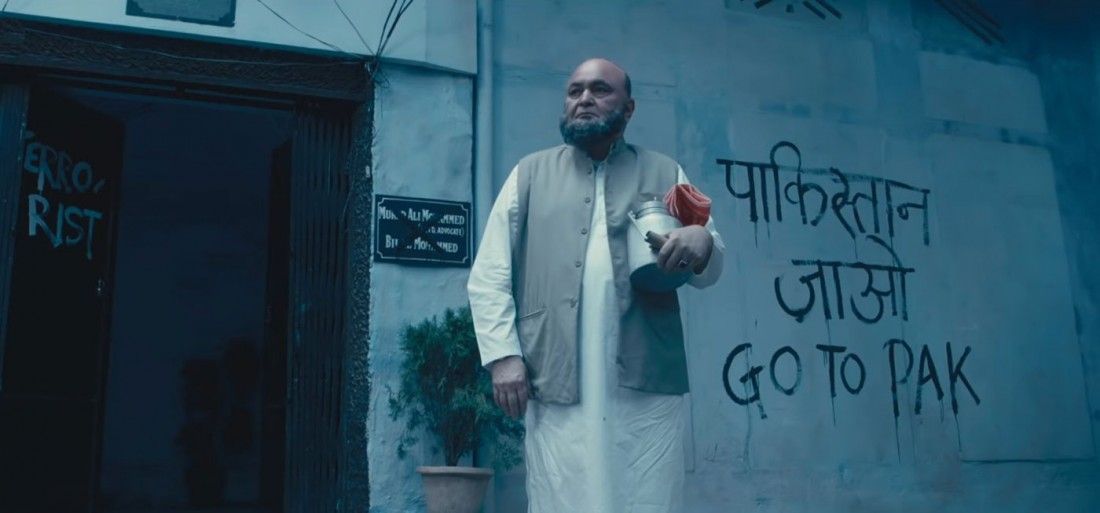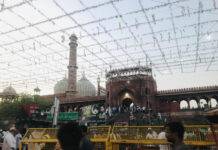The intricate and vulnerable bond between Hindus and Muslims in contemporary Indian society characterised by intolerance and mutual suspicion have been spoken about in recent films like Mulk, Manto and Kedarnath generating a debate on the complexity of Indianness in our times.
Kavya Thomas | The New Leam

[dropcap]F[/dropcap]ilms have the power to entertain us and take us away from our world of daily anxieties, duties and tensions that we may find difficult to overcome. The duration for which we sit in the cinema hall and stare at the large screen, the story, the narrative and the cinematography transport us into an altogether new world. The power of cinema is such that even days after you have watched a good film, the dialogues, the climax, the characters and their dialogues linger in the mind.
It is the powerful capacity of cinema as a medium of communication that gives it immense relevance. Cinema is thus capable of impacting the public imagination in a manner that it can make people cry, it can make them enraged, it can give them soothing calmness and it can create passionate outbreaks. The embedded reality of cinema into the day to day lives of people and its power to transcend the commonplace, its ability too be relatable and yet larger than life- make cinema a powerful social tool.
It is important here to acknowledge the fact that in our nation, cinema has often been seen as a depicter of social problems, of the crisis in the society, the tensed relations between communities and of their dreams and aspirations. On the one hand we see the large budget, commercial and box-office oriented cinema starring mega stars but on the parallel end we see small-budget, acting and story oriented cinema that has its own genre of lovers. Both these kinds of cinema have co-existed in Indian society and both have had their admirers.
Even in contemporary Indian cinema we are seeing how many directors are breaking free from the commercial, high-cast, box-office cinema and wanting to share stories about real issues, social evils, hardships in inter-community relations, biographies of commoners and so on and so forth. Thus there seems to be raising a parallel movement in Indian cinema towards a people centric cinema, where the story itself is the protagonist. Thus in recent years we saw Ketan Mehta’s ‘Manjhi- The Mountain Man’ which depicted the real story of an ordinary villager in Gaya who lost his wife because of being unable to take her to hospital due to an entire mountain that separated his village from the city and how he utilises his rage to make a road through the mountain, so that nobody else suffers the same plight, Shonali Bose’s excellent film ‘Margarita with a Straw’ which is about the dreams of a teenager from India who has cerebral palsy and how she figures out what to do with her life with the ailment, similarly films like ‘Kedarnath’ made by Abhishek Kapoor spoke of the Uttarakhand tragedy in which an inter-faith love blooms despite the hardships and a film like ‘Raazi’ made by Meghna Gulzar that talks about a simple girl who becomes a RAW agent and marries into a Pakistani family to know more regarding the enemy nation, it talks about her pain and anguish as she tries to deliver her role.

The commonality between all these films is that, they were made keeping in mind that the story itself shall be the protagonist of the film, that apart from being entertaining it should leave a message for the world, that no matter how much people had become accustomed to the rhetoric in Indian cinema, they had to cultivate the taste for something meaningful.
The existence of these kinds of films implies that Indians are becoming open to alternative cinema. In this article, we will try to look at one dominant theme that has been coming in Indian films quite often and is also a concern for the society in general. The fact that films are being made on themes such as these means that we are gradually opening up to debate, to think over and to ask some difficult questions. The theme that we are referring to is that of communalism and the strained relationship between the Hindus and the Muslims in India.
Three recent films have tried to contextualise this conflicted relationship and used it as their premise. This is an indicator of the fact that Indian cinema has now begun to explore new areas, talk about socially relevant issues, delve into tabooed areas and raise uncomforting questions. Let us look at three recent films that have depicted the strained Hindu-Muslim bond and reflected on the hardships that ordinary Muslim people living in India have to face in the light of growing communal strife, suspicion over identity, inter-community doubt and disbelief and a distinctive culture of step-motherly treatment from both the society in general and the nation-state in particular.
It is a time when people are asked to go to Pakistan if they dare critique anything political or speak about the faults in their nation, when directors have to publically say sorry for having casted Pakistani actors in their films and there are actors who use platforms such as cinema and advertisements in order to prove that they are ‘patriotic Indians’- the films that speak of an alternative and much more realistic world view become important. This means that art as a medium speaks up against the toxic environment brings out possibilities and challenges the ambience of intolerance. In the three films that have come recently Mulk, Kedarnath and Manto, the dynamics that play in the lives of Muslim people comes to light. How do they establish that they love India more than Pakistan? How should they prove their love for India?
In Mulk, the pain that an old Muslim man goes through when the world around him suddenly begins t0 look at him with deep suspicion and challenges his love for India. Similarly in Manto , we see that the sensitive genius of Manto did not fail to depict the absurdity of the violence that Hindus and Muslims were perpetrating. It is said of Manto that when he had been asked about which place he felt the highest connectivity to, he had said Bombay. His love for the city resulted in a massive heartbreak as he had to flee to Lahore during the Partition. We live in times when even cities, railway stations and monuments are seen to be either devout Hindus or devout Muslims – with little understanding of historical context. Look at the film, Kedarnath and how it depicts the lives of ordinary Muslim men like the porters in Kedarnath, who carry Hindu pilgrims and their luggage t0 the temple.
All the three films depict Muslims and Hindus existing in isolated worlds. Ironically, while many of these films depict the complex bond that they share- at the societal world, little happens to alter things. When one looks back, one cannot help but feel sorry at the fact that the cosmopolitan world that was possible in Manmohan Desai’s Amar, Akbar, and Anthony where each of the protagonists could hold on their identities unashamed. It is ironic that, even when the religious identities that were depicted in films like Amar, Akbar and Anthony were quite superficial, they had a space for recognition in the cosmopolitan nature of the film.
Thus the making of an alternative genre of cinema means that the audience is willing to break free from the taken for granted parameters of entertainment and explore ideas that they were limited towards before. It is only hoped that many more such films tell the stories of real individuals and make reflection a reality in the wider society.













